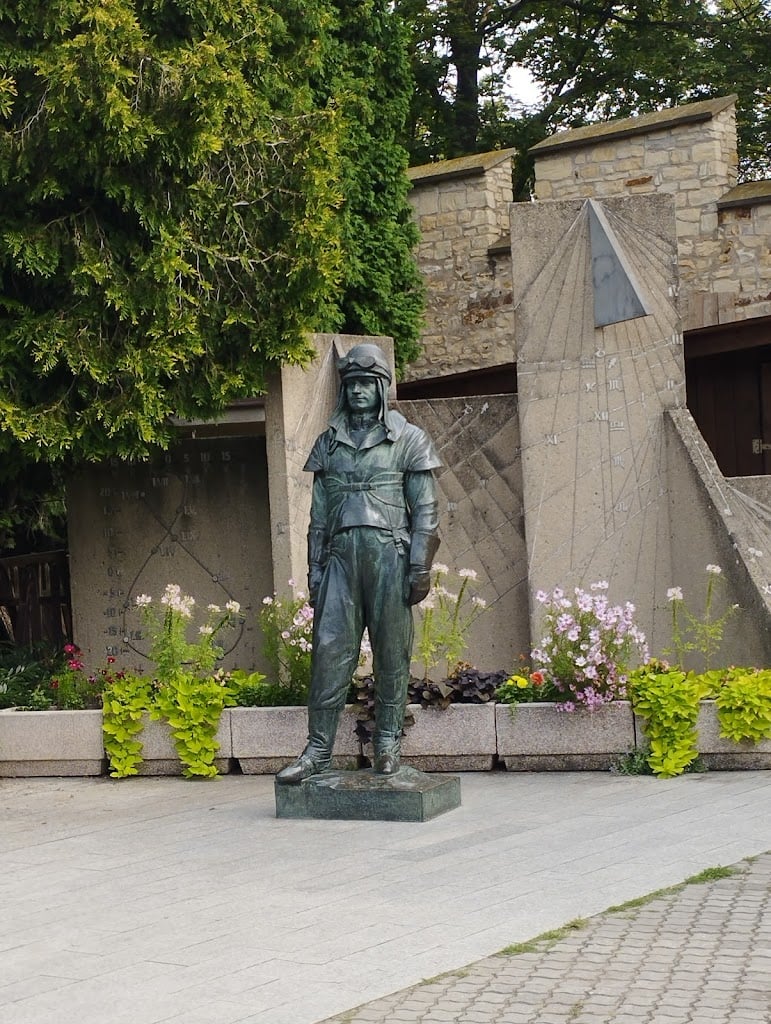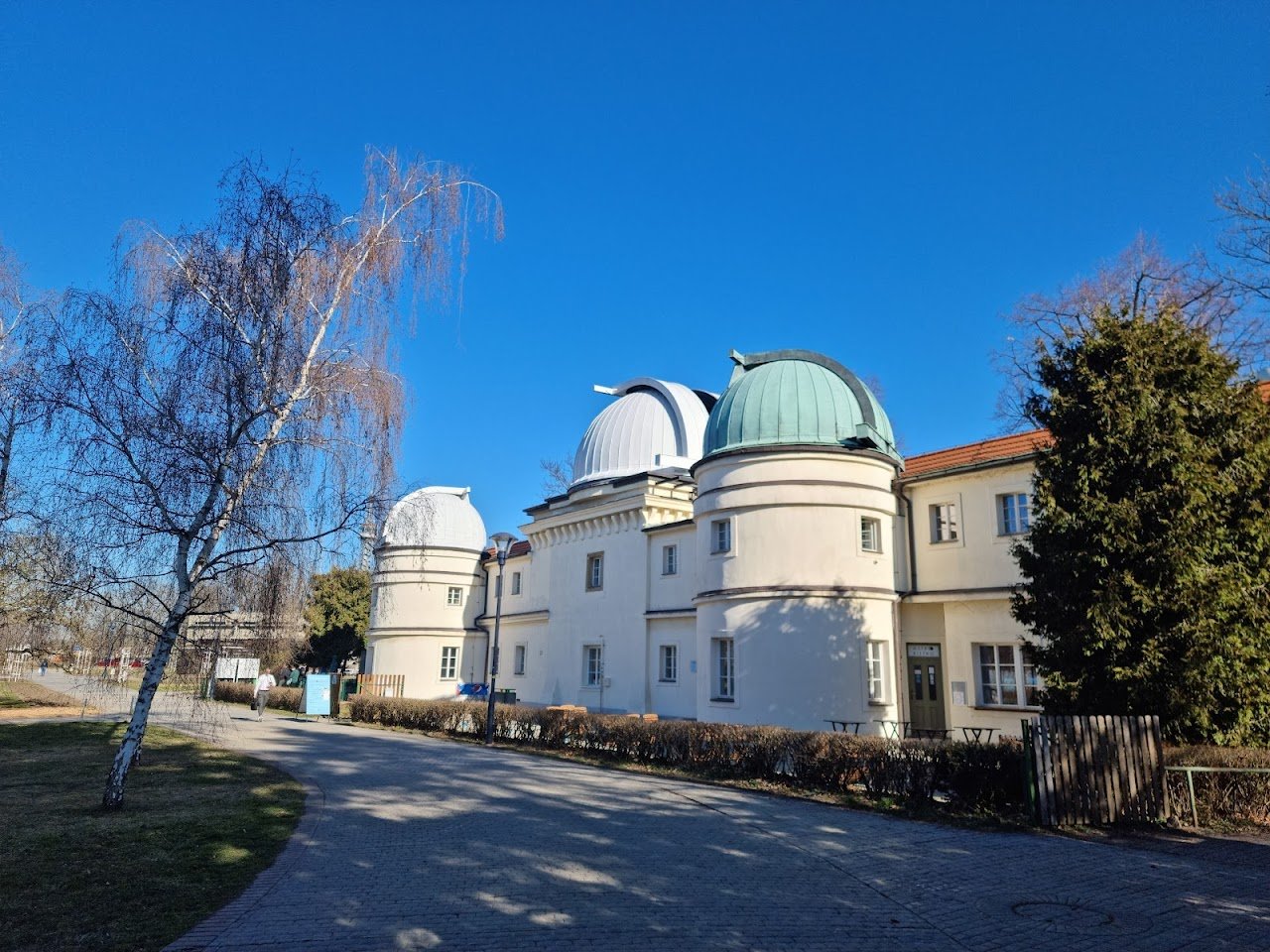The Štefánik Observatory



What people say
Pedro Pereira
Available for hire
"In 1917, the Czech Astronomical Association was constituted, which was determined to establish an observatory in Prague, in order to popularize the astronomical results to the general public. The fist observatory was in one of the towers of the Wilson Railway Station, later on they tried to work in the artificial cave at Grébovka, but due to the lights in the city centre, even the tower of Clementinum was not satisfactory.
After 1926 a decision was made to build a brand new observatory at Petřín by the Hunger Wall. Prague municipality then granted a land plot for this purpose, where a fortification bastion with a gatehouse was located. J. Veselík, a builder from Dobřichovice and a member of the astronomical association, modified the house and added a new wing with a terrace at the top and the first so called Eastern dome, in which the comet finder was placed. There was also an office, a library, a lecture lounge, and a flat of the maintenance keeper. At the end of this first stage, the observatory was first opened only for the members of the astronomical association, and from May 1929 also for the general public. From the beginning, it carried the name of the prominent Slovak astronomer, general of the French army, pilot, diplomat and co-founder of the Czechoslovak state, Minister of Military in the first Czechoslovak government, Milan Rastislav Štefánik.
The construction of the observatory and of the other domes continued and was completed in 1930. A large Zeiss’ double astrograph was placed in the new main dome, which was a telescope with the main mirror’s diameter of 400 mm, purchased with a great discount from the estate of the Vienna astronomer Rudolf König. Even T. G. Masaryk contributed to the realization of this project at the time. The transport from Vienna and the subsequent installation was technically very difficult. The telescope was mounted on a fifteen-metre pillar bricked in the foundations which were seven and a half metres deep. It is a rarity that urns with ashes of two significant astronomers, ing. Jaroslav Štych and Karel Anděl, were placed in the pillar. In May 1945, the observatory was badly damaged by bombardment of the retreating German troops. The main dome was damaged, as well as the tubes of some telescopes. Luckily, the valuable telescope objectives had been well hidden in time. Afterwards, everything was repaired.
The observatory went through great reconstruction and extension in the years 1971 – 76. Although the current equipment of the observatory includes telescopes with greater objective diameters, the original Zeiss’ telescope is still its majestic dominant. Two out of four observing stations are opened for the public – the Western dome and the main dome. In the Western dome, there is a modern mirror telescope of the Maksutov Cassegrain type. Its optics allows for observing objects that are 2600 times smaller than those visible with naked eyes. On bright sunny days, the visitors of the observatory can watch the Sun with the spots and eventual protuberances and sometimes also Venus. In the evening, it is possible to observe the Moon surface, some other planets, binary stars, globular and open clusters, galaxies and nebulas. All the observations are accompanied by professional interpretations. The observatory offers programmes for schools and for the youth, it organizes exhibitions and is active in publishing. It also issues maps and atlases of the stellar sky and since 1933 it has been issuing the Astronomical Annual Almanac, which was actually first issued in 1921. Over time, the name of the observatory has changed several times, but since 1990, the name Štefánik’s Observatory has been used again."
Read more in:
Magdalena Matouskova
Available for hire
"The Štefánik Observatory is also a popular attraction, featuring permanent exhibitions, temporary displays, and the opportunity for celestial observation with telescopes. "
Read more in:
Jennifer Hum
Available for hire
"9 PM - Cool observatory where we got to see the moon! "
Read more in:
Mentioned in these guides
About The Štefánik Observatory
Get the inside scoop on The Štefánik Observatory from local experts, travel creators, and tastemakers. Browse genuine trip notes, The Štefánik Observatory reviews, photos, travel guides, and itineraries from real travelers and plan your trip with confidence.
Website
Phone
Save this spot for later or start mapping out a new trip today
Try our AI Travel Assistant and get instant answers to any questions about your trip.
Ask ThatchGPT


